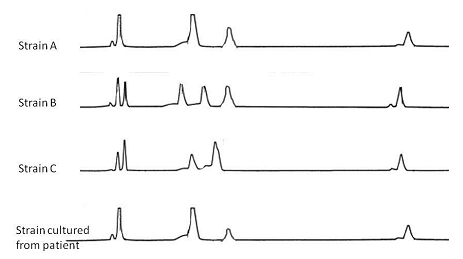What do hemophilia, Duchenne muscular dystrophy, and red-green color blindness have in common?
A) They are more common in females than in males.
B) They are caused by inheritance of an extra autosome.
C) They are caused by inheritance of an extra sex chromosome.
D) The gene that causes them is on the Y chromosome.
E) They are X-linked.
Answer: E
You might also like to view...
To make sure they treat the infection with the correct drug, doctors order DNA fingerprinting of a sample of bacteria taken from the patient for comparison to known fingerprints of strains A, B, and C. With which antibiotic should the patient be treated?
A patient is admitted to the hospital with a mysterious infection. After running some standard tests, doctors believe that the infection is caused by one of three closely—related bacterial strains — A, B, or C — that are hard to treat because they have become resistant to some antibiotics.
Strain A is resistant to antibiotic beta and antibiotic omega
Strain B is resistant to antibiotic alpha and antibiotic omega
Strain C is resistant to antibiotic alpha and antibiotic beta

A. antibiotic alpha.
B. antibiotic beta.
C. antibiotic omega.
D. antibiotic beta or antibiotic omega.
E. any antibiotic will work to kill the bacteria causing the infection.
Classification of aquatic ecosystems is largely based on features of the ________ environment
Fill in the blank(s) with correct word
In which combination of locations would one who is searching for the gametophytes of "flower of stone" have the best chance of finding them?
1. moist soil 2. underground, nourished there by symbiotic fungi 3. south- or west-facing slopes 4. permanently shady places 5. far from any flower of stone sporophytes A) 1 only B) 1 and 2 C) 1, 2, and 4 D) 1, 2, and 5
Spiegelman and colleagues demonstrated natural selection in RNA replications because in their experiments:
a. RNA molecules had differential survival and replication rates. b. RNA was self-replicating. c. the researchers chose which RNA molecules to replicate. d. RNA was copied into DNA.